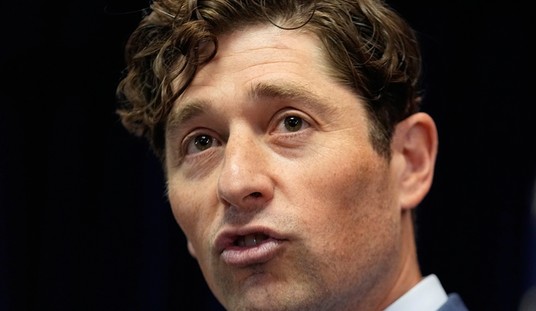The DAPL protesters are gone. Their garbage is not.
Thousands of people who set up camp in August to block the construction of the Dakota Access Pipeline because of the environmental threat they said it posed to the area’s water supply didn’t leave their campsite cleaner than they found it.
Gov. Doug Burgum (R) told KFGO the DAPL protesters left behind tons of garbage that will have to be cleaned up before the annual snowmelt. He compared the camp where tents had been set up and wooden structures built to something between a landfill and a junkyard.
“This is probably the biggest ecological mess on the entire Missouri River system from top to bottom in this country,” Burgum said.
The Associated Press reported that local and federal officials think there could be enough trash and garbage left behind by the protesters to fill 2,500 pickup trucks.
“It’s unfortunate. Again, that just goes against what they’re fighting against, is leaving that stuff and abandoning it and obviously the environment the river,” Scott Davis, North Dakota commissioner of Indian Affairs, told KFYR-TV in Bismarck.
Gov. Burgum issued an executive order for a mandatory evacuation of the DAPL protest site because “unseasonably warm temperatures have accelerated the melt of heavy snowpack and significantly increase the threat of ice jams and overland flooding.”
“Months of accumulated debris, including human waste…pose a significant and increasing environmental threat to the waters of the Missouri River if cleanup and removal efforts are not quickly accelerated and completed before flooding begin,” he added in the executive order.
Morton County Emergency Manager Tom Doering told AP there was more garbage at the protest site than anybody had expected.
“We’re really fighting the clock,” he said.
Thousands of protesters had occupied the campground on federal land between the Standing Rock Sioux Tribe’s reservation and the construction site of DAPL since August 2016.
Protesters who were willing to leave peacefully were driven to Bismarck, N.D., and given bus tickets to go home.
“Right now there is a forced removal happening, an ethnic cleansing,” protester Chase Iron Eyes told CBS News. Iron Eyes, who had lived at the protest site through a North Dakota winter, said he was only leaving to avoid being arrested.
Others said they would allow themselves to be “ceremonially arrested.”
The Associated Press reported approximately 150 of the protesters were seen marching down a road Wednesday. It wasn’t clear where they were going.
NBC News reported that the protesters burned their tents at the demonstration site “for cultural reasons” Wednesday, the deadline for leaving the campground. Wooden housing structures the protesters had built were also burned.
Authorities said two children — a 7-year-old boy and a 17-year-old girl — had to be treated for burns.
Beyond the garbage, junk, and burned-down buildings, Burgum is worried that isn’t all the protesters left behind.
“Peak population of this camp was in early December, and that’s when we had that huge, three-day blizzard. There were tents that were flattened at that time that have never been dug out again,” Burgum said. “Of course, if you were doing this in ideal conditions, the first thing you’d go in there is with cadaver dogs because the last thing you want to do is find that kind of a situation.”
Dotty Agard of the Standing Rock Sioux Tribe was working to clean up the protest site before she had to leave Wednesday.
“It looks like a trash pile. But it’s getting picked up and every spot is starting to look better and better as we work together,” Agard told NPR.
The Standing Rock Sioux Tribe has received $6 million in donations for the protest and Chairman Dave Archambault has said that cleanup efforts would be funded in part by that money.
Burgum has his doubts. He thinks people who have donated have been scammed.
“They’ve just been duped. For anybody that’s clicking the PayPal button, your stuff could be going for illegal activity, it could be going to somebody who’s not even here protesting,” Burgum said.
Anything North Dakota has to pay for cleaning up after the DAPL protesters is a bill that comes in addition to the estimated $33 million the state spent on law enforcement because of the demonstrations.
Burgum has made it clear that North Dakota is not going to pay these bills alone. He promised to sue “agencies, federal government or others” to share the cost.
“We want to make sure that the people responsible are the ones that pay,” he said.
However, the DAPL protest site that came down Wednesday might not be the last demonstration Gov. Burgum and law enforcement officers will see in North Dakota.
CBS News reported new camps were being created on private property, including one the Cheyenne River Sioux built close to a mile from the DAPL camp that had been occupied for six months.
“The camps will continue,” Phyllis Young, one of the protest leaders, said. “Freedom is in our DNA, and we have no choice but to continue the struggle.”









Join the conversation as a VIP Member